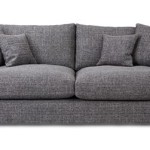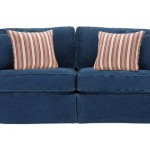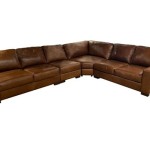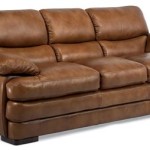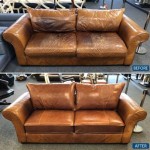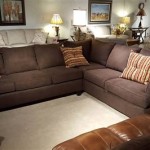Best Quality Sectional Sofas: A Comprehensive Guide
Sectional sofas have become a staple in modern living spaces, offering versatility, comfort, and ample seating. Selecting a sectional sofa involves careful consideration of various factors to ensure it aligns with individual needs, aesthetic preferences, and budget constraints. The concept of "best quality" is subjective, dependent on individual priorities, as a high-quality sectional may be defined by superior materials, durable construction, comfortable design, or a combination of these elements.
This article aims to provide a comprehensive guide to understanding the key aspects of high-quality sectional sofas, exploring the factors that contribute to their value and longevity, and assisting in making an informed purchasing decision.
Understanding Key Components of Sectional Sofa Quality
Several core components influence the overall quality of a sectional sofa. These elements range from the internal frame to the external upholstery, with each contributing to the sofa's structural integrity, comfort, and aesthetic appeal. Paying close attention to these components can significantly impact the longevity and satisfaction derived from the purchase.
The frame forms the foundation of any sectional sofa. Ideally, it should be constructed from kiln-dried hardwood. Kiln-drying removes moisture from the wood, reducing the risk of warping, cracking, and instability over time. Softwoods, while less expensive, are more prone to these issues, compromising the sofa's durability. Corner blocking, where the frame pieces are joined, reinforces the structure and prevents wobbling. Look for frames that are screwed and glued together, rather than simply stapled, for greater stability.
Suspension systems provide support and contribute to the sofa's comfort level. Common systems include sinuous springs, eight-way hand-tied springs, and webbing. Sinuous springs are pre-assembled, and offer a good balance of support and affordability. Eight-way hand-tied springs are considered the gold standard, providing even weight distribution and superior comfort, but come with a higher price point. Webbing systems, made from interwoven bands of fabric or elastic, offer a less expensive alternative but may not provide the same level of support or durability. The type of suspension impacts how the sofa feels when seated and the likelihood of sagging over time.
Cushion fill significantly impacts the comfort and longevity of a sectional sofa. Options include foam, feathers, fiber, and combinations thereof. High-density foam provides firm support and retains its shape well. Feather-filled cushions offer a luxurious, sink-in feel but require regular fluffing to maintain their shape. Fiber-filled cushions are a more affordable alternative to feathers, offering a softer feel than foam but may compress over time. Many manufacturers combine different materials, such as a foam core wrapped in feathers or fiber, to achieve a balance of support and comfort.
Upholstery materials determine the sofa's aesthetic and contribute to its durability and ease of maintenance. Fabric options include natural fibers like cotton, linen, and wool, as well as synthetic fibers like polyester and microfiber. Leather is another popular choice, offering durability and a luxurious appearance. Natural fibers are generally more breathable and comfortable but can be more susceptible to staining and wear. Synthetic fibers are often more durable and stain-resistant. Leather can be expensive but, with proper care, can last for many years. The choice of upholstery material depends on individual lifestyle, preferences, and budget.
Evaluating Construction Quality and Craftsmanship
The construction quality of a sectional sofa is a critical indicator of its overall value and longevity. Careful attention to detail during the manufacturing process can significantly impact the sofa's structural integrity and aesthetic appeal. Evaluating construction quality involves examining various aspects of the sofa's assembly and finishing.
Seam construction is a crucial aspect of quality craftsmanship. Tight, even stitching indicates careful attention to detail and prevents the fabric from pulling or tearing over time. Look for double-stitched seams in high-stress areas, such as the corners and edges of the cushions. Welt cording, a decorative trim that outlines the seams, can also reinforce the fabric and prevent fraying.
Alignment and symmetry are essential indicators of quality construction. The different sections of the sofa should align seamlessly, creating a cohesive and visually appealing design. Cushions should fit snugly within the frame, without gaps or bulges. Any asymmetry or misalignment suggests poor craftsmanship and may indicate underlying structural issues.
The finishing touches, such as the attachment of legs and the application of decorative details, demonstrate the manufacturer's commitment to quality. Legs should be securely attached to the frame, without wobbling or looseness. Nailhead trim, button tufting, and other decorative elements should be evenly spaced and neatly applied. These details contribute to the sofa's overall aesthetic appeal and reflect the level of craftsmanship.
The weight of the sectional sofa can also be an indicator of quality. A heavier sofa typically indicates a sturdier frame and higher-density materials. However, weight alone is not a definitive measure of quality, as some lightweight sofas may utilize durable, modern materials. It's essential to consider weight in conjunction with other factors, such as frame construction and cushion fill.
Examining the underside of the sofa can reveal valuable information about its construction. A dust cover, a piece of fabric that covers the bottom of the frame, protects the internal components from dust and dirt. The presence of a dust cover indicates a higher level of craftsmanship and attention to detail. Also, examine the attachment of the legs and the reinforcement of the frame from underneath.
Considerations for Specific Needs and Preferences
Beyond the fundamental aspects of quality, selecting a sectional sofa involves considering individual needs and preferences. Factors such as room size, seating requirements, lifestyle, and personal style all play a role in determining the ideal sectional sofa.
Room size and layout are primary considerations. The sectional sofa should fit comfortably within the space, without overwhelming the room or obstructing traffic flow. Measure the available space carefully and consider the desired configuration of the sectional, whether it's a classic L-shape, a U-shape, or a modular design that can be adapted to different layouts. Sectional sofas are available in a wide range of sizes and configurations, so it's essential to choose one that complements the room's dimensions.
Seating requirements depend on the number of people who regularly use the sofa and the intended use of the space. A larger family or frequent entertainer will require a larger sectional with ample seating. Consider the depth of the seats and the height of the backrests to ensure optimal comfort for all users. Some sectional sofas include features such as reclining seats, adjustable headrests, or built-in storage compartments, which can enhance comfort and functionality.
Lifestyle influences the choice of upholstery material and overall design. Families with young children or pets may prefer durable, stain-resistant fabrics that are easy to clean. Individuals with allergies may opt for hypoallergenic materials. The design of the sectional should also align with the overall aesthetic of the home. Modern, minimalist interiors may benefit from clean-lined sectionals with neutral colors, while more traditional spaces may call for plush, upholstered sectionals with ornate details.
Personal style is a significant factor in selecting a sectional sofa. The sofa should reflect individual tastes and preferences, contributing to the overall ambiance of the living space. Consider the color, texture, and overall design of the sectional to ensure it complements the existing furniture and decor. Sectional sofas are available in a wide range of styles, from classic and traditional to modern and contemporary.
Budget is an important consideration for every purchase. Sectional sofas range in price from relatively affordable to highly expensive, depending on the materials, construction, and brand. It's essential to establish a budget before beginning the shopping process and to prioritize features and materials that are most important. While it may be tempting to opt for the least expensive option, investing in a high-quality sectional sofa can provide greater long-term value and satisfaction.
Ultimately, selecting the "best quality" sectional sofa is a personal decision based on individual needs, preferences, and budget. By carefully considering the key components of quality, evaluating construction quality, and taking into account specific needs, it is possible to find a sectional sofa that provides comfort, durability, and aesthetic appeal for years to come.

10 Best Sectional Sofas Of 2024 What Brands Them Home Cozy

11 Best Rated Modular Sofas For 2024 Quality Style

The Best Sectional Sofas Of 2024 And How To Pick Them Comfort Works Blog Sofa Resources

The Large Sectional Couch You Need At Home 20 Best Sofas

14 Best Sectional Sofas Of 2024

The 17 Best Sectional Sofas For 2024 Tested Reviewed

13 Best Sectional Sofas 2024

14 Best Sectional Sofas Of 2024

15 Best Deep Sectional Sofas For Ultimate Lounging Viv Tim
The 5 Best Modular Sectional Sofas On A Budget Champagne Savings

